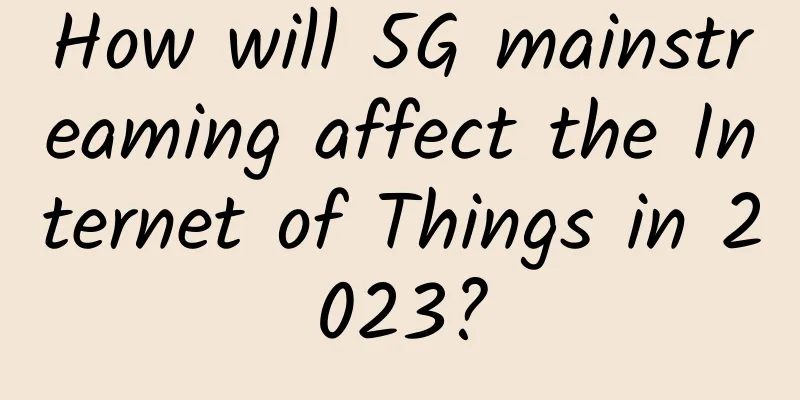Who invented Ethernet? Do you know?

|
On April 7, 1946, the year after the end of World War II, a baby boy was born in an ordinary family in Brooklyn, New York, USA. The boy's father is a technician in a gyroscope factory, and his mother is an ordinary housewife. For this family, which had just experienced the hardships of war, it was a very happy thing to have a son. The couple had high hopes for the child, hoping that he would achieve success and become a top engineer when he grew up (engineer was a very prestigious profession at that time). Sure enough, the baby boy named Metcalf lived up to their expectations. When he grew up, he showed great talent in learning. In 1964, he graduated from high school and successfully entered the top university in the United States (also the cradle of top engineers at the time) - Massachusetts Institute of Technology. Metcalfe's parents probably didn't expect that their child would not only become a top engineer, but also founded a Fortune 500 company. His great invention changed the lives of countless people and had a profound impact on the direction of the IT industry. Yes, this Metcalfe is Robert Melancton Metcalfe, the inventor of Ethernet technology, founder of the famous technology company 3Com, and the originator of Metcalfe's Law. Robert Melancthon Metcalf █ Rookie's PhD thesis rejectedIn 1969, at the age of 23, Metcalfe successfully graduated from the Massachusetts Institute of Technology with a degree in electrical engineering and business administration. A year later, he received a master's degree in computer science from Harvard University and continued to pursue a doctorate at Harvard. While pursuing his doctorate, Metcalfe found a job at MIT's MAC project group, which later became very famous for its research in operating systems, computing theory, and artificial intelligence. In 1969, ARPANET (the predecessor of the Internet), which was promoted by the US Department of Defense, was officially born, connecting the mainframe computers of four prestigious universities. University of California, Los Angeles, University of California, Santa Barbara, Stanford University, University of Utah Metcalfe paid attention to this incident and thought it was a good idea. So he strongly suggested that Harvard University and MIT connect their large-scale computer systems to ARPANET. (Metcalfe was both a graduate student at Harvard and a researcher at MIT.) Arrogant Harvard University rejected his proposal, but MIT agreed. Soon, Metcalfe completed the construction of the network interface and connected MIT's mainframe computer to ARPANET. Based on his design and research (establishing a high-speed network interface and protocol software between the ARPANET IMP and the PDP-10 time-sharing minicomputer), he wrote a doctoral thesis and submitted it to Harvard University's degree committee. In June 1972, Metcalfe failed his doctoral thesis defense because the degree committee believed that his thesis lacked "mathematical" and "theoretical" qualities. The blow did not come only from Harvard. When participating in the ARPANET project, Metcalfe once led 10 AT&T officials to visit the ARPANET demonstration. As a result, the system crashed during the demonstration. Metcalf wrote in his memoirs: “I looked up in agony and saw them laughing at the unreliability of packet switching. … I will never forget that. To them it was confirmation that circuit switching (the technology behind traditional landline phones) was here to stay and that packet switching was an unreliable toy that would never have much impact on the business world.” The successive setbacks made Metcalfe a little disappointed. Soon after, he received an enthusiastic invitation from Bob Taylor, the director of the Palo Alto Research Center of Xerox (one of the main initiators of ARPANET), to join the laboratory and complete his thesis. Metcalfe readily agreed. The Palo Alto Research Center is the famous PARC laboratory. Many great inventions were born in the PARC laboratory, such as the laser printer, mouse, graphical user interface (GUI), bitmap graphics, etc. Many of Steve Jobs' Apple computer innovations came from here. █ Encountering inspiration from colleagues and finally achieving project successAfter arriving at PARC, Metcalfe quickly began his work. At that time, PARC wanted to design the world's first personal computer (later known as Alto). Metcalfe's task was to design a network interface for the computer so that they could connect to each other. The biggest problem in building a computer network with multiple user terminals is how to coordinate the access to the network by each computer host. In the early 1960s, computer scientist Leonard Kleinrock proposed that the mathematical theory of queueing could be used to coordinate the flow of data in a network by simulating traffic jams and people queuing. ARPANET adopted this theory and proved that it worked. In 1971, Norm Abramson, a professor at the University of Hawaii, established a radio network called ALOHAnet (ALOHA is a common greeting used by Hawaiians), which adopted a more "radical" approach than ARPANET. In ALOHAnet, data is transmitted in tiny packets. There is no attempt to avoid collisions between packets. Instead, any user whose message is lost due to a collision simply retry the packet after a random time interval. How ALOHA Works It's like two people talking. If both sides start talking at the same time, they will stop talking immediately. After a while, they will restart the conversation. After a few attempts, one side will stop talking, and the problem will be solved. You will find that ALOHAnet's strategy has an obvious flaw: it wastes resources. This method is useful in low-traffic situations, but when the network becomes congested, conflicts will become frequent and transmission efficiency will drop significantly. After reading Norman Abramson's paper, Metcalfe was deeply inspired. Soon, he improved the ALOHAnet model and proposed a new model. In the new model, host computers independently adjust the wait time between transmission retries based on the frequency of collisions. If collisions are rare, they will retry quickly; if the network is congested, they will back off to keep the overall communication efficient. Metcalfe's new model made up for the shortcomings of his thesis. Soon, in May 1973, he finally passed the defense at Harvard University and obtained his doctorate. (It is worth mentioning that Harvard University did not publish his thesis, but MIT did, which made Metcalfe feel upset.) Metcalfe also introduced new models in his own research projects. On May 22, 1973, Metcalfe distributed a memorandum called "Alto Ethernet", formally proposing the concept of Ethernet. In the memo, Metcalfe sketched out how Ethernet would work: "Participating stations, such as AlohaNet or ARPAnet, would inject their packets, which would propagate at megabits per second, with collisions, retransmissions, and backoffs." Part of the memo Metcalfe's vision for Ethernet combined Norman Abramson's random retransmission mechanism, its own adjustments to the system clock, and other improvements to the ALOHAnet model to mitigate the effects of collisions. Some of these theoretical innovations had been developed by other researchers, but Metcalfe was the first to integrate them into practical network designs. As for the origin of the name Ethernet, Xiaozaojun needs to explain it. Before electromagnetic waves were discovered, people proposed ether, believing it to be an omnipresent transmission medium (light is transmitted through ether). Later, people discovered that ether did not actually exist. Metcalfe adopted the name "Ether", which was to regard Ethernet as a communication medium. He also got a nickname for himself, called "Ether Daddy". In June 1973, Metcalfe received permission to build a 100-node prototype Ethernet. To complete the complex tasks of logic design, circuit board construction, and microcode writing, Metcalfe enlisted the help of Stanford University graduate student David R. Boggs. Metcalf (left) and Boggs (right) On November 11, 1973, thanks to their efforts, the world's first Ethernet prototype system was officially born. At the time, this Ethernet had a transmission rate of 2.94 megabits per second, about 10,000 times faster than the previous terminal network. █ Founded 3Com and promoted the popularization of EthernetAfter the birth of Ethernet technology, Metcalfe strongly suggested that Xerox could commercialize this technology. However, the response speed of Xerox's management was very slow and no practical action was taken. In 1979, after waiting for six years, Metcalfe could no longer bear it and left PARC. He decided to start his own company to promote the popularization of Ethernet technology. The company he founded was later the famous communication network company - 3Com. The name of 3Com comes from three letters: computer, communication, and compatibility, which fully reflects Metcalfe's desire to improve the compatibility of computer communications. After 3Com was founded, it greatly improved the commercial viability of Ethernet by selling network software, Ethernet transceivers, and Ethernet cards for small computers and workstations. In 1980, with the help of Metcalfe, the world's second largest computer company at the time, Digital Equipment Corporation (DEC), semiconductor company Intel, and large system supplier Xerox, formed a technical alliance and launched the DIX (starting with the letters of the three companies) Ethernet standard. Soon after, in 1983, the IEEE set up a special working group to launch the IEEE 802.3 standard based on a variation of the DIX standard. The earliest 802.3, namely 10BASE5, had a throughput of only 10Mbps. The medium was thick coaxial cable, and it used the access control method of Carrier Sense Multiple Access with Collision Detection (CSMA/CD, which science and engineering students should be familiar with). In addition to Ethernet, IBM and General Motors have also launched their own network standards. In particular, IBM's Token Ring technology formed a fierce competition with Ethernet. Finally, after 20 years of competition, Ethernet won and Token Ring was eliminated. █ After achieving success, I retired and transformed myselfThroughout the 1980s, Metcalfe promoted the popularization of Ethernet. On March 21, 1984, 3Com successfully went public. In the mid-1980s, Metcalfe proposed an important viewpoint, namely: "The value of a network is proportional to the square of the number of nodes in the network." This viewpoint is the famous "Metcalfe's Law." This law has important reference value for understanding network effects and the development of the Internet economy. In 1990, Metcalfe left 3Com and became a critic and technology columnist. Metcalf also made a lot of mistakes during that period, and some of his strange remarks often made him the target of ridicule in the media. In 1995, Metcalfe predicted that the Internet would suffer a "catastrophic collapse" the following year. He said that if his prediction was wrong, he would "eat his words." Later, it turned out that he was indeed wrong. In 1997, at the 6th International World Wide Web Conference, he took out a printed copy of his article and put it into a blender with some liquid. Then, amid the cheers of the audience, he calmly ate the blended slurry. While eating, he also admitted his mistake. Metcalfe's prediction errors also include: Linux will be killed by Windows 2000; wireless networking will be abandoned in the mid-1990s; and in 2006, Windows and Linux will not be able to handle video services. ... Unreliable prophet In 2001, Metcalf left the media field. He founded North Star Ventures and transformed into a venture capitalist. In 2011, Metcalf went to the University of Texas at Austin as a professor. In 2022, after more than 50 years, he returned to MIT's Computer Science and Artificial Intelligence Laboratory (formerly MAC, now renamed CSAIL) as a researcher. During this period, 3Com also experienced many ups and downs. In 1999, 3Com's revenue peaked at $5.7 billion. But soon, the Internet bubble burst, 3Com fell from grace, and its market value shrank significantly. In November 2009, 3Com was acquired by HP for $2.7 billion in cash and withdrew from the stage of history. In his later years, Metcalfe won numerous awards for his significant contributions to Ethernet. In 1996, he was awarded the IEEE Medal of Honor. In 2003, he received the National Medal of Technology and the Marconi Award. In 2007, he was inducted into the National Inventors Hall of Fame. Not long ago, on March 22, 2023, the 76-year-old Metcalfe was awarded the 2022 Turing Award by the Association for Computing Machinery (ACM), with a prize of up to 1 million US dollars (from Google). Jeff Dean, senior vice president of research and artificial intelligence at Google, said in an official ACM statement: “Today, there are approximately 7 billion network ports worldwide. Ethernet is so ubiquitous that we take it for granted. Yet, it’s easy to forget that without Bob Metcalfe’s invention and efforts to make every computer connected to the Internet, our connected world would not be what it is today.” ConclusionJeff Dean is right. Ethernet technology is the cornerstone of our data communication network. As the father of Ethernet, Metcalfe's contribution is extremely huge. Today, Ethernet is still the main standard for wired network communications around the world. Its processing data rate has been upgraded from 2.94Mbps and 10Mbps to the current 400Gbps, 800Gbps, and even 1.6Tbps. The familiar number 802.3 will be with us for a long time until the day it is replaced. Well, that's all for today's article. Thank you for your patience in reading. If you think it's well written, please forward it and give it a thumbs up! Thank you! References:1. "Ethernet Inventor Bob Metcalfe Wins Turing Award", The Paper; 2. "Turing Award is awarded to the father of Ethernet!", New Intelligence; 3. "50th Anniversary of Ethernet: The Father of Ethernet Wins Turing Award, 2023 Roadmap Released", SDNLAB; 4. Wikipedia entry. |
<<: How to identify fiber link problems?
>>: Age and technology determine building control lifespan
Recommend
RAKsmart: US servers start at $46/month, Hong Kong/Korea E5 servers start at $99/month, cluster servers 258IP monthly payment starts at $153
Earlier this month, we shared RAKsmart's VPS ...
Get ready for Industry 4.0 with 5G and native AI
The Internet of Things (IoT) is a major business ...
RackNerd launches new French data center with annual subscription starting at $17.98
RackNerd announced the news of its new French dat...
Building the future: How ICT can help develop livable cities
With the steady acceleration of global urbanizati...
WiFi 6 is not suitable for individual users yet
5G has become a household name, but its new WiFi ...
What kind of report card have we submitted one year after 5G licensing?
Time flies, and in the blink of an eye, it has be...
BudgetVM high-defense dedicated server 50% off for the first month, 1Gbps unlimited traffic, 5 computer rooms starting from $41.94
BudgetVM is still offering a 50% discount on the ...
5G network construction: NSA or SA first?
Different from the era from 3G to 4G, the evoluti...
Who moved my broadband? A record of the discovery and solution process of HTTP hijacking
The hijacking we encounter in daily life is usual...
The difficulty of operation and maintenance has reached a new level - it does not exist!
What is the data center most afraid of? Power out...
Key Points in CCIE Exam - MPLS VPN Technology
MPLS VPN technology is a key point in the CCIE ex...
Five changes that 5G will bring to operators
There is no doubt that several operators are acti...
Do you really understand hybrid cloud? Dive into the cloud and look at some confusing cloud computing concepts
[51CTO.com original article] Cloud computing is g...
Hengchuang Technology: Hong Kong/US cloud server annual payment starts from 318 yuan, Hong Kong CN2 independent server starts from 480 yuan
Hengchuang Technology is a Chinese business found...
Stop coding manually! Found this amazing tool that generates K8S YAML in one click!
In daily K8S operation and maintenance work, we u...









